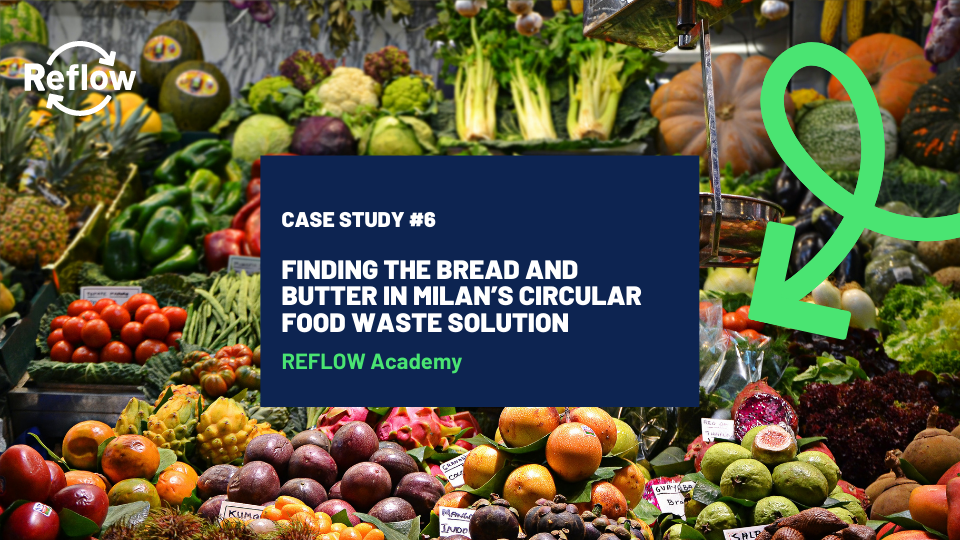REFLOW CASE STUDY #6: Finding the Bread and Butter in Milan’s Circular Food Waste Solution
18 May 2022
This case study is part of the open source REFLOW case studies collection which is built upon the learnings from activities and actions taking place in the pilot cities of the REFLOW project. The case studies link practice and theory and are designed to be used as teaching material in different academic settings, as circular economy transition in cities can be addressed from different academic lenses – urban studies, consumer studies, business studies, sustainability studies…
Synopsis of the Case
This case is based on a real organisation in Milan that has carried out activities as part of the European Union Horizon 2020 project, REFLOW.
The Milan REFLOW team, comprised of system designers, researchers, makers, and municipal actors, set out to tackle the overwhelming amounts of food waste being produced across the city of Milan. The team decided to focus on the fruit and vegetable wholesalers within Municipal market, SogeMi. In co-creation with the market, the team developed the innovative circular solution, BOTTO, that would enable the recovery of surplus fruits and vegetables.
While the REFLOW project and its funding was coming to an end, Milan´s transition towards a more circular and generative urban food system has just begun. Therefore, to sustain the Milan team´s solution beyond the REFLOW project, they needed to find new sources of income and new investors to further develop and ensure the solutions scalability.
The case provides key insights on the complex structure of the Milanese redistribution network for surplus food, including a short description of key actors in the network – wholesalers, re (distributors) and charities. It goes over how the Milan Team intends to assist the network with a more efficient handling of surplus food, that ultimately can be redistributed to those in need. Throughout the case, stakeholders’ potential benefits from using the platform as well challenges concerning their willingness to pay for the service is briefly considered.
Students are asked to put themselves in the shoes of Eva, a freelance consultant with experience in business modelling, to consult the Milan Reflow team on choosing a revenue model for the BOTTO solution. Having in mind the different needs of actors in the urban food network, Eva needs to recognize the balance between each actor’s value capture and risks, and accordingly, their ability and willingness to pay for the service.
Target Group
The case is suitable for undergraduate and postgraduate levels in courses on strategic decision making, sales management, entrepreneurship, and circular economy.
Learning Objectives
After completing the case, students should be able to understand the following:
- Apply theoretical knowledge on revenue modelling to a practical business case
- Understand, reflect upon, and contrast different revenue model approaches
- Identify, design, plan and assess a revenue model for the specific case (advantages and disadvantages).
Teaching material
Download the full case study
Download the teaching guide